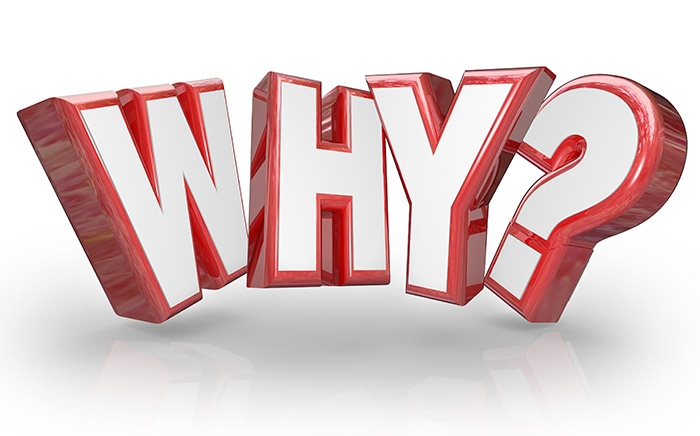Understanding Uninsured Motor Vehicle Exceptions Under Personal Auto Policies
Introduction
Uninsured motorist coverage, often referred to as Part C in personal auto insurance policies, plays a vital role in protecting drivers from financial consequences when involved in an accident with another driver who lacks sufficient insurance. But not all vehicles on the road qualify as an “uninsured motor vehicle” under the legal and insurance definitions. Understanding these exceptions is essential for policyholders seeking comprehensive protection and knowing when their coverage applies. This article provides an in-depth analysis of which vehicles are not considered uninsured motor vehicles under Part C, actionable steps for verifying coverage, and guidance for accessing further resources and support.
Uninsured Motorist Coverage Overview
Uninsured motorist (UM) coverage is designed to compensate you, your passengers, or pedestrians for bodily injury or, in some cases, property damage caused by a driver who does not have adequate liability insurance. The essential function of UM coverage is to ensure victims receive financial compensation even when the at-fault party is uninsured or underinsured. This coverage is mandatory in many states, while others require insurers to offer it to policyholders who may opt out in writing [4] . The specifics of what constitutes an uninsured motor vehicle are defined by state law and insurance policy language [1] .
Definition of an Uninsured Motor Vehicle
According to most state insurance regulations and standard policy language, an uninsured motor vehicle is typically defined as a vehicle for which:

Source: ar.inspiredpencil.com
- There is no bodily injury liability insurance and property damage liability insurance in the amounts required by law.
- The insurance coverage is denied by the insurer for any reason.
- No bond or deposit of money or securities is held in lieu of insurance.
- The owner has not qualified as a self-insurer as allowed by law.
- The owner or operator is immune from liability under specific legal circumstances.
- The owner or operator is unknown (as in hit-and-run incidents, subject to state-specific provisions).
However, not every vehicle that seems uninsured falls within this definition. Certain vehicles and situations are explicitly excluded from being considered “uninsured motor vehicles” for purposes of Part C coverage [1] .
Vehicles Not Considered Uninsured Under Part C
Insurance policies and state statutes usually specify exceptions-vehicles that are not considered uninsured motor vehicles, even if they lack insurance. These commonly include:
1. Owned Vehicles (By the Policyholder or Household Member)
Any vehicle owned by the policyholder, a resident relative, or a member of the same household is typically not classified as an uninsured motor vehicle under Part C. This is because your policy’s liability and other coverage sections apply to these vehicles, and claims must be made under those provisions. For example, if you are injured while riding in your own uninsured vehicle, you cannot claim under your uninsured motorist coverage for that accident [1] .

Source: ru.wikipedia.org
2. Vehicles Designated for Use as Public or Livery Conveyance
Vehicles like taxis, limousines, or rideshare vehicles generally are excluded from uninsured motorist coverage when they are being used for public transportation or hired service. This exception prevents commercial operators from relying on personal auto policies to cover risks that should be insured under business policies [1] .
3. Government-Owned Vehicles
Vehicles owned by any government agency-local, state, or federal-are usually excluded. These entities are either self-insured or have immunity from certain liabilities, so uninsured motorist coverage does not apply [1] .
4. Vehicles Insured for Liability At or Above Minimum Limits
If a vehicle has liability insurance that meets or exceeds the state’s minimum requirements, it is not considered uninsured-even if the policy limits are insufficient for the actual damages. Instead, underinsured motorist coverage would apply in these scenarios [2] .
5. Vehicles Covered Under Self-Insurance or Bond
When a vehicle owner qualifies as a self-insurer or posts a bond or deposit as allowed by state law, their vehicle is not classified as uninsured for UM purposes. These alternatives to standard insurance are recognized by law and fulfill the financial responsibility requirements [1] .
Examples Illustrating These Exceptions
To clarify, here are practical scenarios:
- Owned Vehicle Example: Jane is injured in an accident while driving her own uninsured vehicle. She cannot claim UM benefits from her auto policy for this incident, as owned vehicles are excluded.
- Government Vehicle Example: Mark is hit by a city bus that is uninsured. He cannot claim UM coverage for injuries because government vehicles are not classified as uninsured motor vehicles.
- Livery Vehicle Example: Lisa is a passenger in a taxi involved in an accident with an uninsured driver. The taxi, being a public conveyance, is excluded from UM coverage under her personal policy.
- Self-Insured Vehicle Example: A delivery truck operated by a company that posts a bond in lieu of insurance is not considered uninsured under Part C, so UM coverage does not apply for an accident involving this vehicle.
Accessing Uninsured Motorist Coverage Effectively
If you are involved in an accident and unsure whether the other vehicle qualifies for uninsured motorist coverage, take these steps:
- Contact your insurance provider immediately to report the accident and clarify coverage specifics.
- Gather all relevant information about the other vehicle, driver, and insurance status.
- Review your policy documentation and speak to your insurance agent for detailed explanations about exceptions and exclusions.
- If you require further clarification, consult your state insurance regulator or department for official guidance. For example, residents in Texas can contact the Texas Department of Insurance for clear information on UM coverage requirements [5] .
- If you experience a hit-and-run, provide the police report and all available evidence to your insurer, as UM coverage may apply depending on your state [2] .
Securing Adequate Protection
To ensure you are protected against uninsured and underinsured drivers, consider these best practices:
- Review your state’s minimum required UM/UIM coverage and consider purchasing higher limits for added security [4] .
- Ask your insurance agent about exclusion details and the impact on your claims process.
- Compare coverage options from multiple insurers to find the best fit for your needs.
- Update your policy when your household circumstances change, as exclusions for owned vehicles may be affected by changes in family members or vehicle ownership.
- Keep documentation of all communications and policy changes for future reference.
Alternative Pathways and Solutions
If your accident involves a vehicle that is not covered by UM under Part C, you may still have other avenues for compensation:
- File a claim under your collision coverage for vehicle damage, subject to your deductible [5] .
- Seek medical payments or personal injury protection (PIP) benefits if available in your policy for bodily injuries.
- Pursue direct legal action against the at-fault party, especially in cases involving commercial or government vehicles.
- If your coverage is denied or you face challenges, contact your state insurance consumer protection division for assistance.
Key Takeaways
– Not all vehicles lacking insurance are classified as uninsured motor vehicles under Part C. – Owned vehicles, government vehicles, livery/public conveyances, and self-insured vehicles are common exceptions. – Understanding these exclusions helps you determine whether you can file a UM claim and what alternative coverages may apply. – For further support, contact your insurer, review your policy, and consult state regulatory agencies for official guidance.
References
- [1] Virginia Law (2024). Uninsured motorist insurance coverage definition and exceptions.
- [2] Progressive (2025). What Is Uninsured Motorist Coverage?
- [3] Allstate (2023). Uninsured Motorist Coverage & Underinsured Motorist Coverage.
- [4] Wisconsin OCI (2023). Automobile Insurance FAQs on Uninsured Motorist Coverage.
- [5] Texas Department of Insurance (2024). Uninsured Motorist Coverage Tips.



